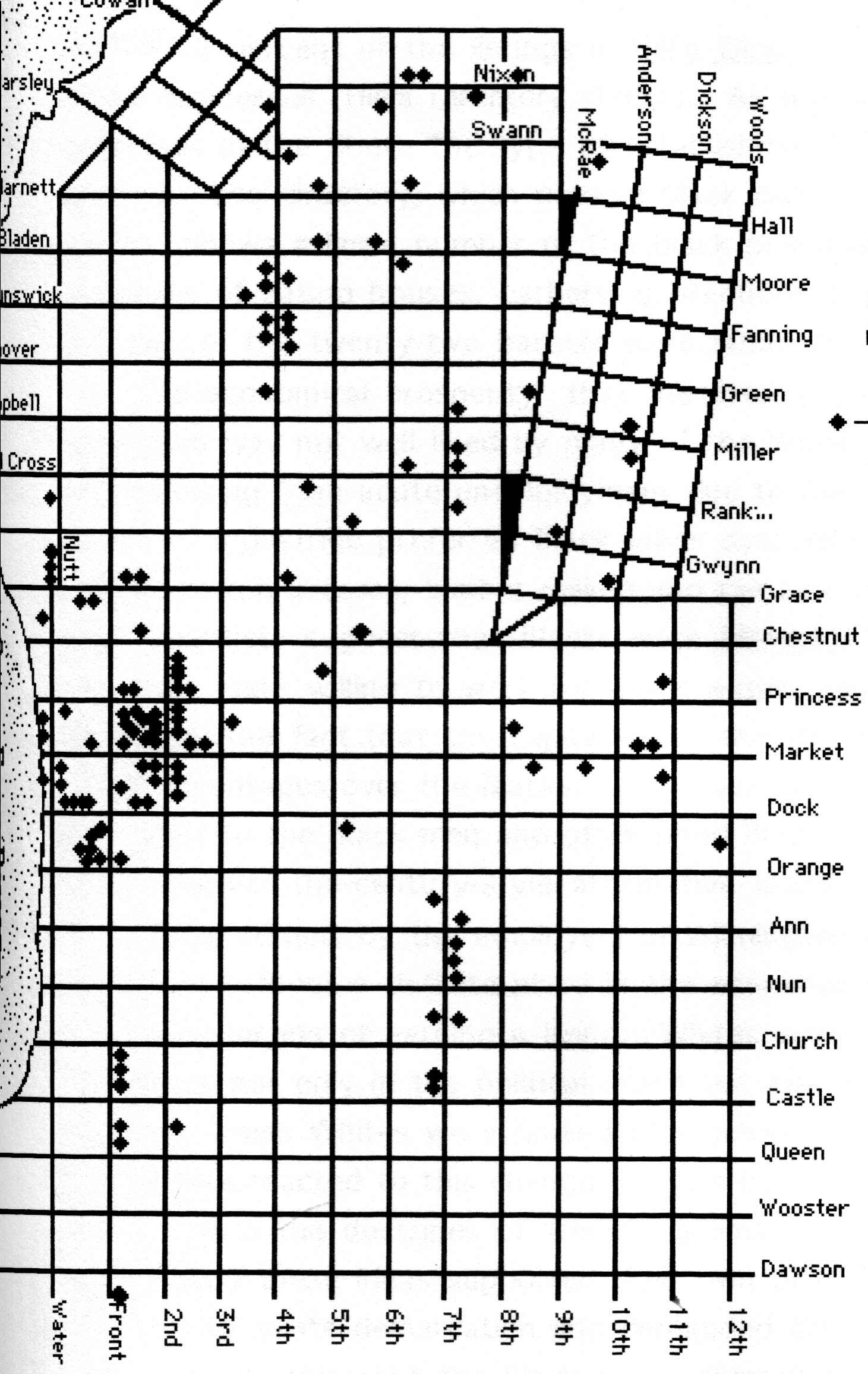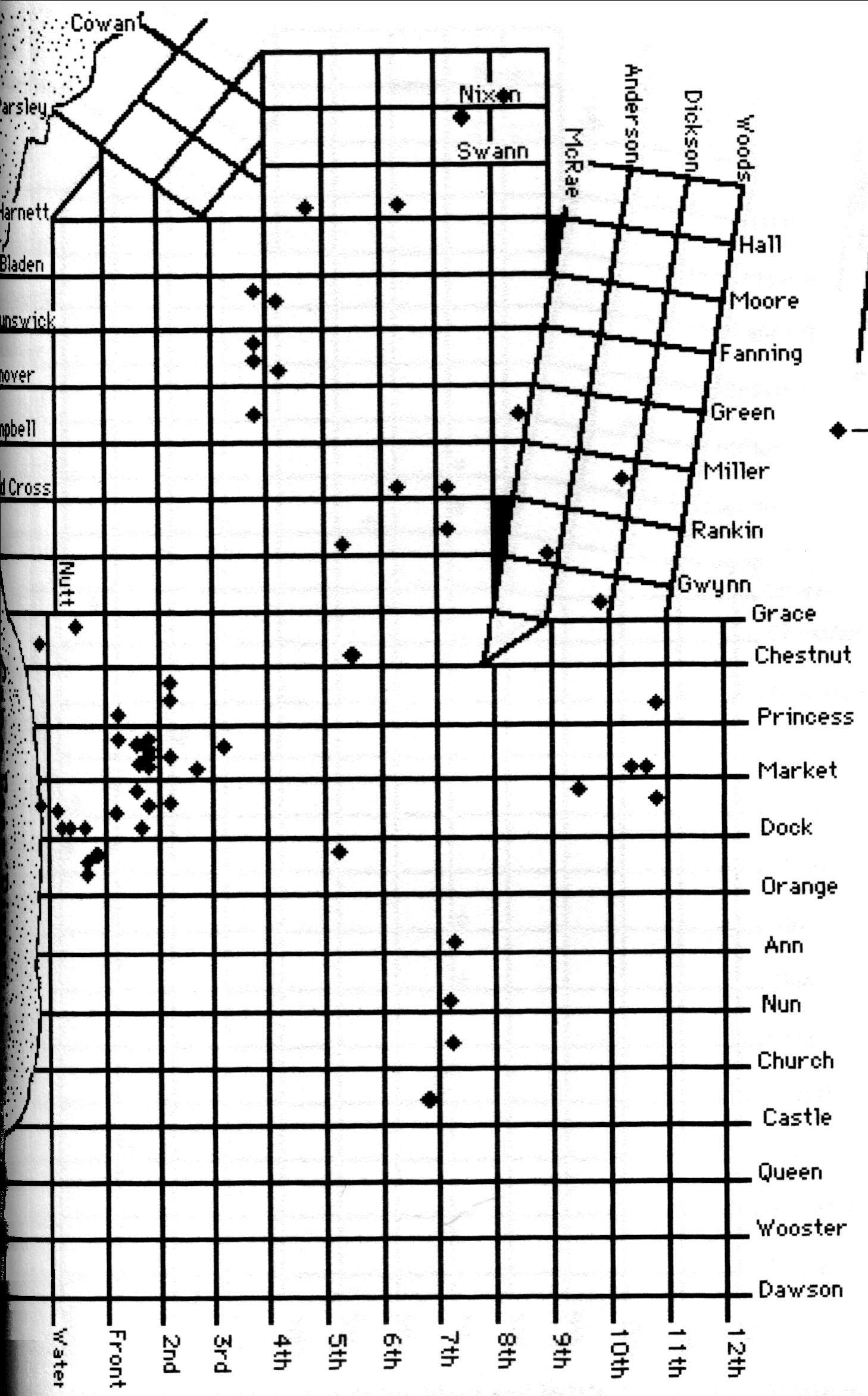This exodus continued in the next months, as the economic and political consequences of white supremacy became evident. The black majority disappeared virtually overnight, as some 1500 black citizens--representing some 14% of the African American population--left the city within a year. By 1900, whites were in a majority, and the ratio of whites to blacks increased in the following years, as African Americans chose to leave their home and move north, out of the Jim Crow South.
Many successful black businesses in Wilmington left in the wake of the riot and the establishment of white supremacy. Ninety percent of the downtown eating establishments had been black, as had eighty percent of the barbers. Many of these black businesses closed within a few years of the riot and coup, as white supremacy took its toll, economic and political, on African Americans in Wilmington.
City population in 1898: 20,452 (11,722b, 8,731w) City population in 1898: 20,555 (9,744b, 11,222w)


Black businesses in
Less than 40% of those
Wilmington, 1897
still remained, 1900
return to Table of Contents
Link to 5.2:
BLACK DISFRANCHISEMENT